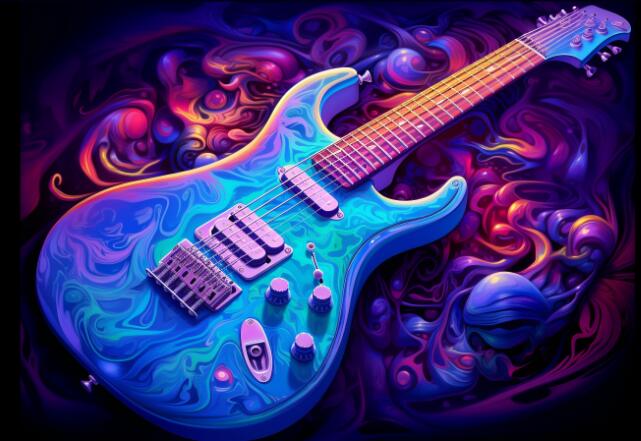Artificial intelligence has made great strides in artistic creation, but it faces unique challenges when it comes to music creation. Unlike image generation or text writing, music emphasizes emotional expression, cultural heritage, and the uniqueness of human experience. This article will deeply explore the limitations of artificial intelligence in music creation, analyze its core issues such as lack of emotional depth, cultural understanding, and creative intention, and explore the possibility of artificial intelligence as an auxiliary tool in music creation.
As we’ve explored in this blog, AI has made significant progress in areas ranging from image generation to writing. However, when it comes to creating music that truly touches people's hearts, AI faces huge challenges.
While AI music generators can produce passable melodies, their creations often feel hollow and disconnected from the unique human experience that defines music. YouTube channel owner Adam Neely analyzed the dilemmas faced by AI in music creation in his video.
The "flaw" of AI music: lack of emotion and cultural heritage
One of the main obstacles stems from AI companies' understanding of music. For many developers, music is seen as a "problem" to be optimized by algorithms rather than an art form to be explored. This way of thinking robs music of its essence: its emotional depth, historical roots, and cultural significance.
An AI-generated tune about cheeseburgers, for example, might mimic the structure of Delta blues, but that actually belittles the rich history that gave birth to the genre. This focus on "solving" music, reducing it to an exercise in pattern reproduction, loses the intention of giving meaning to music.

AI music lacks the “humanity” we instinctively respond to in art. Because music is inseparable from human history, passion and tradition. However, the accelerationist mentality of many AI developers prioritizes technological progress over understanding why music moves us. This shortsightedness results in music that sounds sophisticated but feels artificial. Without a shared humanity, AI works fail to capture the ineffable quality of music that resonates with individuals and society.
Another important obstacle facing AI is the lack of interest among many developers in the artistic process. Human composers and performers make choices based not only on knowledge but also on intuition, feeling and pure whim. They inject spontaneous, even deliberately flawed, touches to express their personality.
AI, on the other hand, works by analyzing and copying patterns. But it doesn't understand why these patterns exist. For example, an AI might expand a musical phrase or introduce a harmonic progression that sounds correct based on its training data. But without proper context or intention, the result can feel soulless.
Alan Turing proposed the imitation game in his 1950 paper, which later inspired the Turing test. He understood that randomness and unpredictability were needed for machines to exhibit human-level intelligence. Modern machine learning incorporates these elements, but randomness alone doesn't make music meaningful. Because "randomness" indicates a lack of understanding. Music is not just about unexpected turns or novel combinations, but more importantly about creating emotional connections. An AI can mimic randomness or structure as its programmers wish, but it has no idea why it should do so.
The lesson AI enthusiasts are about to learn is that culture cannot be reduced to data points. The history of genres such as jazz, blues and classical music is inseparable from the social and personal contexts that shaped them. As a result, AI-generated music often appears bland because it lacks this background foundation. It can imitate the superficial characteristics of a genre, but it fails to capture the backstory that gives the music its soul.
Even if AI could create music that was indistinguishable from human work, it still wouldn't solve the deeper problem: intent.
Music is more than just sound waves imposed on unsuspecting air molecules. It is a form of communication between the creator and the audience. AI-generated music lacks the intention and emotional connection that people naturally seek in art. This lack of intention is why AI music (as well as visual art and fiction), no matter how impressive the technology, often feels incomplete.
Humans have the ability to reinterpret and redefine music, even finding meaning in songs they didn't originally like. Because music invites participation. It’s a medium where people actively engage, whether by dancing, singing or just listening deeply. In contrast, AI music often feels static, rarely allowing listeners to connect or reinterpret.
The future of AI music: assisting rather than replacing
AI-generated music faces huge obstacles in replicating the emotional, cultural and historical dimensions of human music. While it may technically succeed in producing a masterful piece of music, it lacks intention, cultural understanding and character that prevent it from achieving the necessary human touch.
That said, AI can enhance music in a variety of ways without replacing the human element. When used wisely, AI can become a tool for artists, assisting in composition or sound design while leaving room for creativity and emotional expression. The challenge is to ensure that AI complements music's rich tradition, rather than replacing it.
Because at the end of the day, music is more than just a series of notes. It both reflects who the audience is and opens a door for them to an ideal world. As long as AI developers view music as a problem to be solved rather than a medium of expression, AI-generated music will remain synthetic.
All in all, artificial intelligence is still in its infancy in the field of music creation, and its future development direction should be to assist human artists rather than replace human creativity and emotional expression. Only by fully understanding the cultural connotation and emotional depth of music can AI truly add new vitality to music creation.